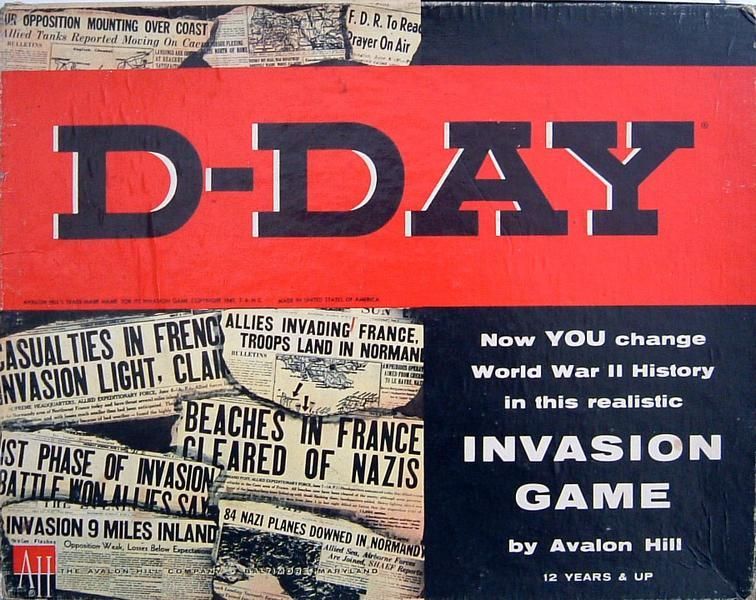D-Day (1961) Board Game
D-Day is a classic board game that was first released in in 1961. It is a wargame that simulates the events of the D-Day landings during World War II. The game is designed for 2 players and has a runtime of approximately 120 minutes. Players take on the roles of either the Allied forces or the Axis powers, trying to outmaneuver and outwit their opponent on the battlefield.
Game Components of D-Day
How To Setup D-Day
The setup involves the German player arranging their starting forces with significant flexibility. The German player must determine the initial defensive setup, which can be complex and critical for the game’s outcome. After the German setup, the Allied player decides on the invasion area, which can be randomized for solo play. For example, rolling 2d6 can determine if the Allies invade in the south branch, Normandy, or other areas.
Gameplay Mechanics and Game Objective
– Allied player must establish a beachhead, break out of the beachhead, conduct a rapid advance across France, and sustain 10 divisions across the Rhine.
– German player must resist the Allied advance and prevent the Allies from achieving their objectives.
Player Experience
Playing **D-Day** involves a deep strategic engagement, particularly for the German player who must carefully plan the initial defensive setup to counter the Allied invasion. The game requires players to manage resources effectively, make tactical decisions, and adapt to changing circumstances on the battlefield. The complexity of the setup and the need for strategic planning can make the game challenging but rewarding.
Pros
Cons
Personal Thoughts on D-Day
**D-Day** is ideal for experienced wargamers who enjoy deep strategic games with historical themes. It is not recommended for beginners due to its complexity and the time required to set up and learn the rules. However, for those interested in World War II and military strategy, **D-Day** offers a rich and engaging gaming experience that simulates one of the most pivotal battles in history.
We are supported by our audience. When you purchase through links on our site, we may earn an affiliate commission, at no extra cost for you. Learn more.

